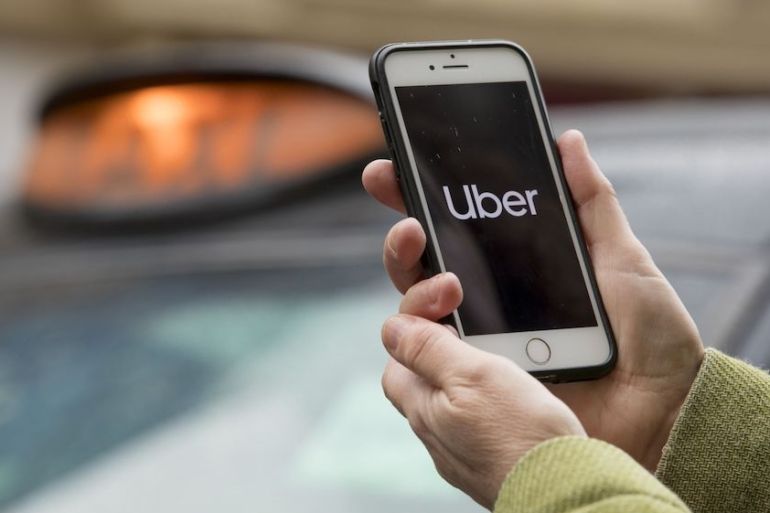Uber quarterly sales fall for first time as pandemic guts rides
Ride-hailing apps sales fell 29 percent in the second quarter to $2.24bn, ending a decade of unchecked growth.

Uber Technologies Inc. generated more revenue from delivering food than transporting people for the first time last quarter, but it failed to offset a steep and prolonged decline in ridership brought on by the coronavirus pandemic.
Sales fell 29% in the second quarter to $2.24 billion, ending a decade of unchecked growth. The loss in the quarter also widened, but Uber maintained Thursday that it will achieve its goal of turning an adjusted profit by the end of next year. Food delivery has become a central part of that strategy, even more so after the $2.65 billion deal to buy Postmates Inc.
Keep reading
list of 4 itemsMexico’s teachers seek relief from pandemic-era spike in school robberies
‘A bad chapter’: Tracing the origins of Ecuador’s rise in gang violence
Why is the US economy so resilient?
Shares sank as much as 5% in extended trading after the financial report.
The sharp drop in ridership in the second quarter mirrors the overall contraction of the travel industry. With many retailers, schools and workplaces closed or at reduced capacity, transportation use will probably remain low for the foreseeable future, and Uber could be “permanently impaired,” according to Daniel Morgan, a portfolio manager at Synovus Trust Co. “Continued high Covid-19 case levels will likely weigh on ride-sharing demand throughout 2020 and into 2021,” he wrote in a note to clients.
In an acknowledgment of the long-term consequences of the pandemic, Uber said this week that its own employees could work from home until the end of June 2021. As the effects weigh on the business, Chief Executive Officer Dara Khosrowshahi has turned to cost-cutting. He eliminated about a quarter of the workforce in May and shuttered dozens of offices.
Uber even pared back its global food delivery operation by exiting more than a half-dozen markets to make room for expansion in more developed ones. After bidding unsuccessfully for Grubhub Inc., Uber agreed to buy Postmates last month in a bid to add more U.S. customers.
In the second quarter, gross bookings from delivery doubled to $6.96 billion. Mobility, which is predominantly made up of ride-hailing but also includes scooter rentals, declined 75% to $3.05 billion. Gross bookings is a closely watched measure of the total value of Uber spending. Analysts expected less from delivery and more from ride-hailing in the quarter.
In the quarter that ended in June, the loss excluding taxes, interest and other expenses was $837 million. Analysts on average expected an adjusted loss of $883 million, according to data compiled by Bloomberg.
Although the company once trumpeted exotic projects like self-driving vehicles and helicopter rides, those businesses were scarcely mentioned in the company’s financial report, reflecting humbler ambitions and a focus on delivery and mobility. The number of monthly active platform users, a closely watched metric that measures engagement, shrank 44% in the second quarter to 55 million users, well below analysts’ expectations of a 6.9% decline.
Uber didn’t address the impact that a possible worker reclassification of its drivers could have on operations. Uber was dealt setbacks over the last year in California, where the law is designed to give employee benefits to its workers, and New York, where courts have sided with some drivers. The states represent two of Uber’s largest markets.
Failure of a November ballot measure in California that Uber is pushing could substantially drive up the company’s costs. If Uber reclassifies its drivers as employees, ride prices would increase as much as 30% in San Francisco and as much as 120% in the less populated Inland Empire where demand is sparse, according to an analysis by Uber.
(Updates with stock change in the third paragraph.)